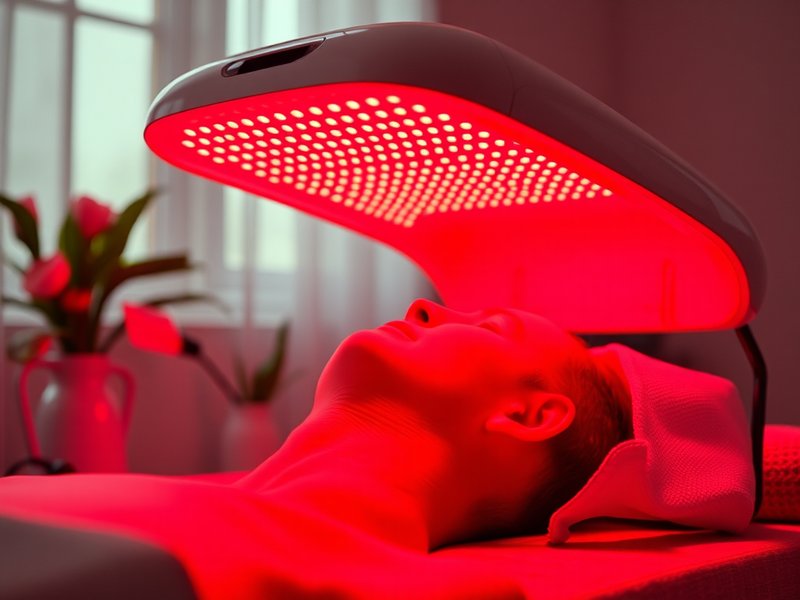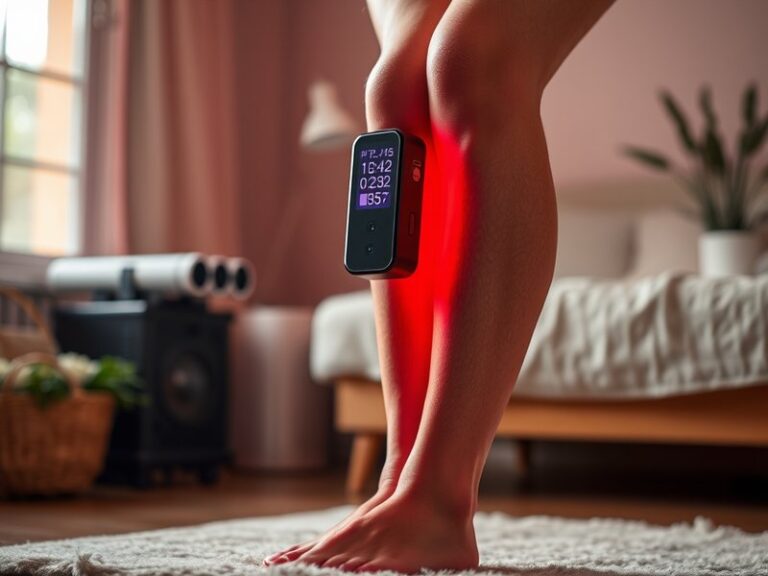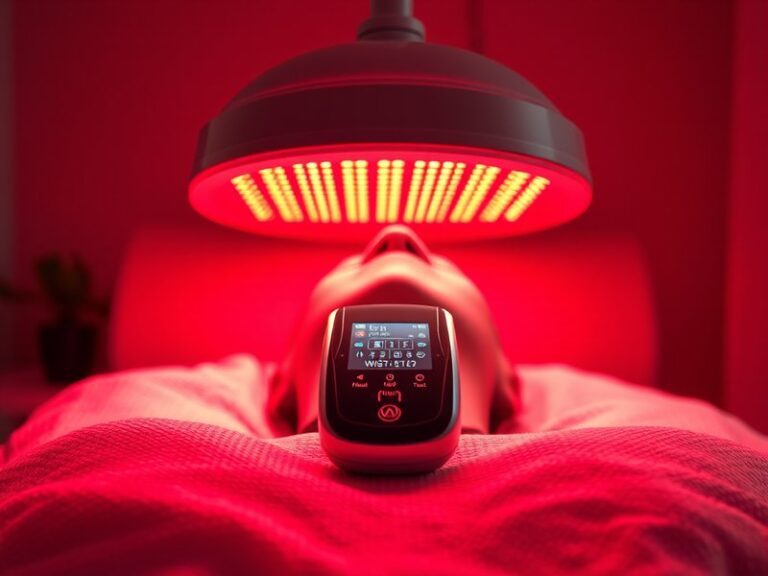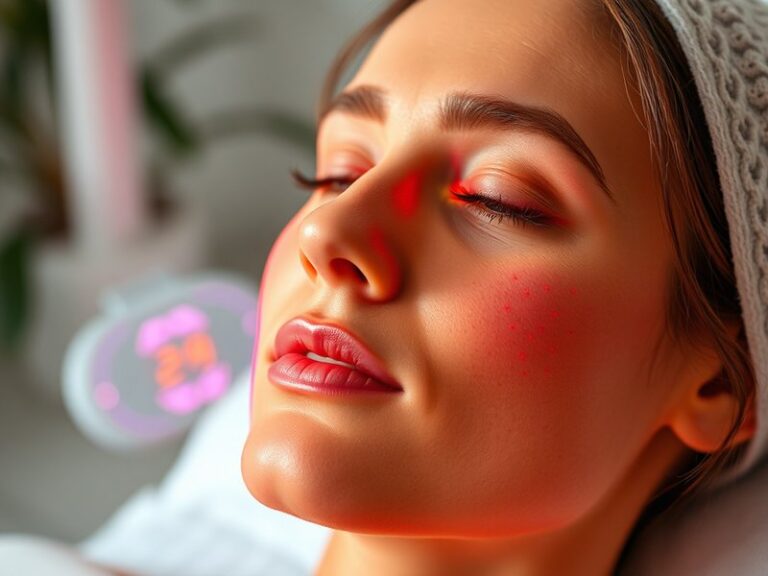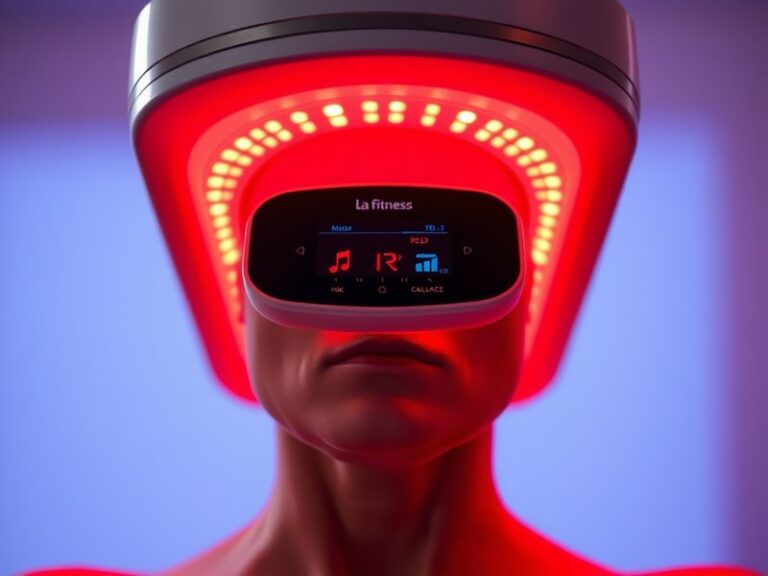Does Red Light Therapy Emit Uv Rays?
Does Red Light Therapy Emit UV Rays?
Is Red Light Therapy a safe and effective treatment option, or does it come with hidden risks?
This article will explore the nature of red light therapy, examine its benefits and considerations, and clarify whether this treatment method emits UV rays. By the end, you will have a comprehensive understanding of red light therapy and how it may fit into your wellness routine.
Key Takeaways
- Red light therapy does not emit UV rays, making it a safe option for most individuals.
- This therapy has several potential benefits, including improved skin health and enhanced recovery from injuries.
- Considerations such as treatment duration, frequency, and skin sensitivity are important when using red light therapy.
What is Red Light Therapy?
Red light therapy (RLT) is a non-invasive treatment that uses low-wavelength red light to promote healing and rejuvenation at the cellular level. It is often employed in dermatology and physical therapy.
Red light therapy works by penetrating the skin and stimulating mitochondrial function, which increases cellular energy (ATP) production. This process can enhance various physiological functions, including tissue repair, inflammation reduction, and skin rejuvenation. This therapy is typically administered using LED devices, which are designed to provide specific light wavelengths that do not include ultraviolet (UV) rays.
How Does Red Light Therapy Work?
At the heart of RLT is the principle of photobiomodulation. Cells absorb the light energy emitted by the therapy, initiating biological processes that can lead to improvements in cell metabolism and function. This unique ability to enhance cellular processes without generating heat or causing damage differentiates red light therapy from other forms of light therapy, such as ultraviolet treatment.
What are the Benefits of Red Light Therapy?
Red light therapy offers a range of benefits, making it an appealing option for many people seeking natural health solutions.
Improved Skin Health
RLT is well-known for its efficacy in treating skin conditions such as acne, wrinkles, and eczema. Studies have shown that red light can stimulate collagen production, resulting in firmer, more youthful-looking skin.
Enhanced Muscle Recovery
Athletes often use red light therapy to accelerate muscle recovery after intense workouts. The increased ATP production helps repair tissue damage and reduce inflammation.
Discover the full story Does Red Light Therapy Aid Weight Loss?
Pain Relief
Many individuals report significant pain relief from conditions like arthritis and fibromyalgia after undergoing red light therapy. The therapy’s anti-inflammatory properties contribute to its effectiveness in pain management.
Increased Energy Levels
Some users experience a boost in energy and overall well-being. By enhancing mitochondrial function, red light therapy may improve energy levels for those feeling fatigued.
Is it Possible to Use Red Light Therapy Safely?
Yes, red light therapy can be conducted safely when following standard protocols and guidelines. However, users should be mindful of a few considerations to optimize their experience.
What are the Advantages of Using Red Light Therapy?
Red light therapy provides several advantages:
- Non-Invasive Treatment: Unlike surgical or invasive options, RLT is pain-free and does not require downtime.
- Accessible: Many devices for home use are available, allowing individuals to receive sessions conveniently.
- Few Side Effects: Generally, there are minimal side effects, making it suitable for most skin types and ages.
What are the Disadvantages of Using Red Light Therapy?
Though generally safe, there are some disadvantages to consider:
- Time Commitment: Achieving optimal results often requires consistent treatment over weeks or months.
- Cost: Professional treatments can become expensive, though home devices offer a more affordable option.
- Not a Cure-All: RLT may not work for everyone, and results can vary depending on individual factors.
What are the Things to Consider Before Using Red Light Therapy?
Before starting red light therapy, a few key factors should be taken into account.
Skin Sensitivity
Be aware of your skin type and sensitivity. Some individuals may experience irritation, so it’s advisable to start with shorter sessions to assess tolerance.
Frequency of Treatment
Determining the appropriate frequency of sessions is crucial. Beginners should consult guidelines or professionals to avoid overexposure while still reaping benefits.
Device Quality
Investing in a reputable device is essential. Lower quality devices may not provide the desired wavelength or efficacy, leading to unsatisfactory results.
What are the Alternatives to Red Light Therapy?
If red light therapy does not appeal to you, there are several alternative treatments worth considering.
Blue Light Therapy
Primarily used for acne treatment, blue light therapy works by targeting oil glands and killing acne-causing bacteria. It’s a popular choice for individuals with acne-prone skin.
Laser Therapy
Laser therapy is a more intense treatment option that can address various skin issues, including scarring and pigmentation. It often requires downtime and can be costly.
Microcurrent Therapy
This method uses low-level electrical currents to stimulate facial muscles, enhancing overall skin tone and reducing fine lines. It’s a popular choice for non-surgical facelifts.
Learn the details in Does Red Light Therapy Benefit Skin?
Conclusion: Is it Recommended to Use Red Light Therapy?
Red light therapy is a promising non-invasive treatment that has shown various benefits, including improved skin health, faster muscle recovery, and pain relief, all without emitting harmful UV rays. However, potential users should carefully consider factors such as skin sensitivity, frequency of use, and device quality before beginning treatment.
Overall, if you are looking for an effective and safe way to enhance your wellness routine, red light therapy may be worth exploring.
Frequently Asked Questions
Does red light therapy emit UV rays?
No, red light therapy does not emit UV rays. It operates within a specific wavelength range that is safe for the skin.
How long does each red light therapy session last?
Sessions typically last between 10 to 30 minutes, depending on the device used and the area being treated.
Can I use my red light therapy device every day?
Yes, many people use their red light therapy devices daily, but it’s best to start with shorter sessions and consult guidelines for frequency.
Is red light therapy suitable for all skin types?
Red light therapy is generally safe for most skin types, but individuals with particular skin concerns should consult a dermatologist before starting treatment.
How soon will I see results from red light therapy?
Results can vary, but many users start noticing improvements within a few weeks of consistent treatment, especially for skin concerns.
